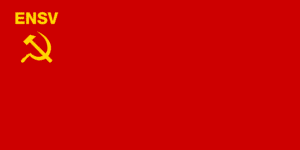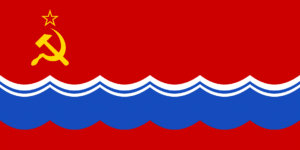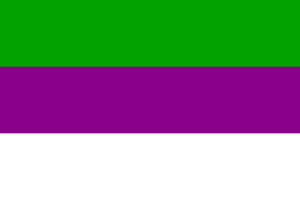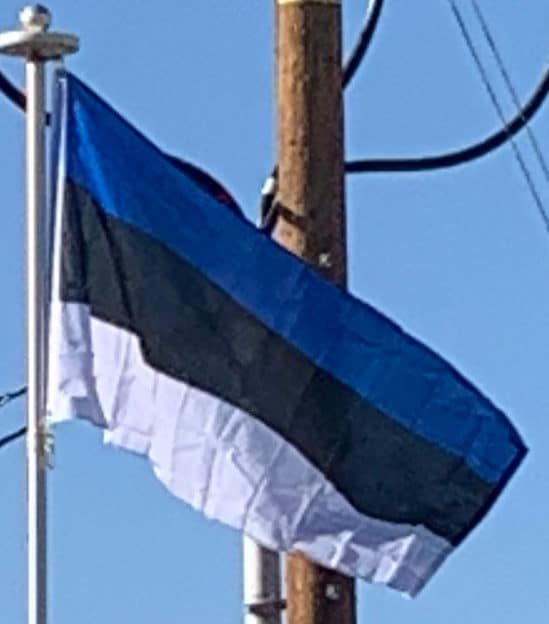The invasion by the Soviet Union in June 1940 led to the flag’s ban. It was taken down from the most symbolic location, the tower of Pikk Hermann in Tallinn, on 21 June 1940, when Estonia was still formally independent. On the next day, 22 June, it was hoisted along with the red flag. The tricolour disappeared completely from the tower on 27 July 1940, and was replaced by the flag of the Estonian SSR.

During the German occupation from 1941 until 1944, the flag was accepted as the ethnic flag of Estonians but not the national flag. After the German retreat from Tallinn in September 1944, the Estonian flag was hoisted once again.
When the Red Army arrived on 22 September 1944, the red flag was just added at first. Soon afterwards, however, the blue-black-white flag disappeared. In its place from February 1953, the Estonian SSR flag was redesigned to include the six blue spiked waves on the bottom with the hammer and sickle with the red star on top.

The flag remained illegal until the days of perestroika in the late 1980s. 21 October 1987 was the first time when Soviet forces did not take down the flag at a public event. 24 February 1989 the blue-black-white flag was again flown from the Pikk Hermann tower in Tallinn. It was formally re-declared as the national flag on 7 August 1990, little over a year before Estonia regained full independence.
A symbolism-interpretation made popular by the poetry of Martin Lipp says the blue is for the vaulted blue sky above the native land, the black for attachment to the soil of the homeland as well as the fate of Estonians — for centuries black with worries, and white for purity, hard work, and commitment.

